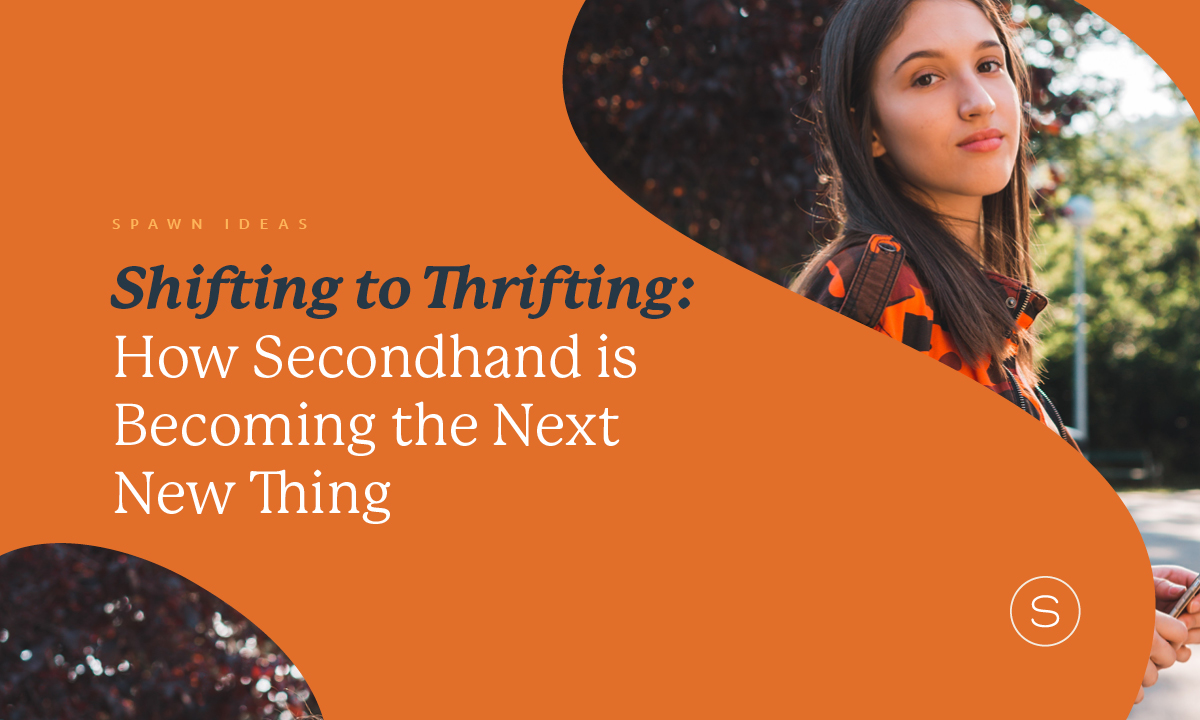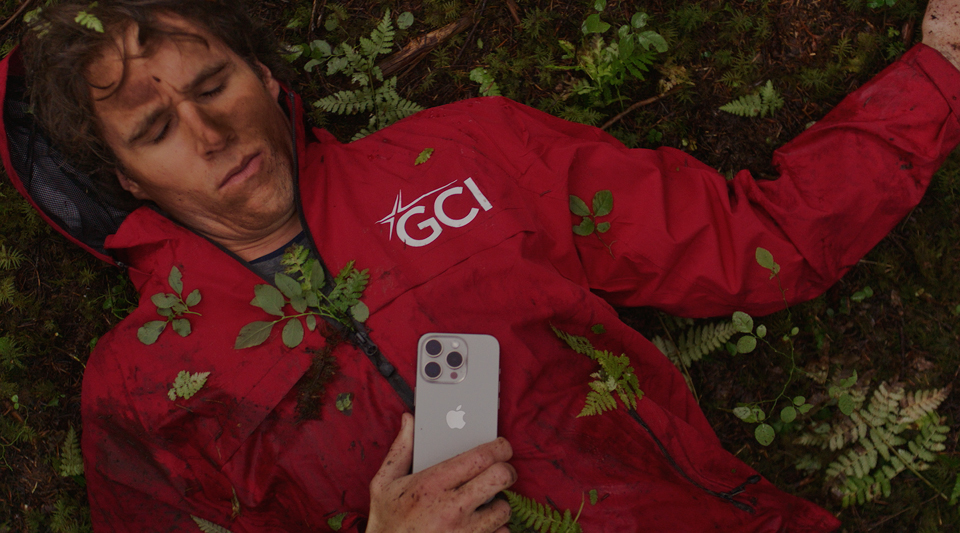By Kaylee Devine
I am in the process of passing along our son’s baby gear (finally, my husband would say!). Every item has a ton of life left in it – and a ton of memories, too. Every single article of clothing or piece of gear has a story, and even though we don’t need it anymore, it’s kind of hard to part with it.
That’s why I am being very intentional about finding each item a new home. I want to make sure my son’s things don’t end up in the landfill, but with new families who can use it, appreciate it and make new memories with it.
Turns out I’m not alone; there’s quite a market for buying and selling quality secondhand items. Secondhand retail – aka “thrifting” – has grown into a $28 billion industry over the past decade [1]. And it’s not just teenagers shopping for cheap clothes at the local thrift shop – businesses feeling the pinch from inflation and supply chain issues are finding creative ways to lean into the growing trend as well.
thrift·ing
/ˈTHriftiNG/
verb
Shopping for secondhand clothing and accessories
Shopping secondhand is nothing new. What’s noteworthy is how it’s becoming a global phenomenon, expected to grow 127% by 2026, expanding three times faster than the overall global apparel market. In the U.S., the secondhand market is expected to more than double by 2026, reaching $82 billion.[2]
“Thrifting has been normalized. Since so many people are doing it, it’s now seen as cooler. It’s seen as better than going to the mall.”[1]
There are numerous cultural trends driving the thrifting phenomenon:
- Style and nostalgia. Thrifting is a budget-friendly way to create a distinctive personal style by making old things new again. For some thrifters, it’s also a statement rejecting homogeneous-looking stores and fashions.
- Sustainability. Thrifting isn’t just about making a fashion statement. Sustainability-minded shoppers are also conscious of everything from landfill waste to exploitative working conditions of the fashion industry – and that increasingly drives the way they shop.
Environmental sustainability has become a significant priority influencing the shopping choices of young consumers.[3]
-
Gen Z. Accelerating the growth of thrifting is Generation Z, whose members have embraced secondhand fashion faster than any other age group and account for over 40% of global consumers. Gen Z’s changing consumer habits and vast purchasing power are major drivers of the resale industry.
- Social influencers and technology. Not surprisingly, social media is also helping drive the thrifting obsession, with influencers posting massive thrift hauls on Instagram, TikTok and YouTube. Meanwhile, online consignment stores like thredUP and apps like Depop make it faster and easier to shop secondhand, compared to the old days of sifting through racks at the local thrift store.
@meliss.com gonna wear that harley every day this summer #thrift #thriftwithme #fyp #thrifthaul ♬ Late Night Talking - Harry Styles
- Inflation and the rising costs of goods. Consumers are spending less as they feel the squeeze of inflation. thredUP’s 2022 Resale Report found that 44% of consumers are cutting back their spending on apparel – more than any other category except eating out. Thrifting provides a way to satisfy the shopping urge – on a budget.
Secondhand – a solution for businesses?
Like consumers, businesses are also feeling the impact of inflation and rising costs – while dealing with ongoing global supply chain issues that continue to impact the availability of their inventory.
For these businesses, it’s essential to find creative ways to keep their brand top of mind and relevant for an emerging audience during a challenging time. Leaning into the growing trend of thrifting can provide a solution for businesses struggling with goods becoming more expensive – and less available.
Benefits of thrifting for brands
There are numerous benefits for businesses that shift their marketing strategy to incorporate thrifting. For example, thrifting:
- Utilizes existing inventory.
- Builds new relationships with an emerging (and influential!) generation.
- Reinforces a brand’s commitment to sustainability.
- Underscores brand quality by tangibly demonstrating a product’s longevity.
- Provides an opportunity to tell stories and share memories, deepening the emotional connection with the brand.
3 ways to activate thrifting with your target audience
1. Create a brand buzz on social. Encourage your existing fans to find and post your secondhand products, and share stories about what they are posting. Expand your reach by creating a new or leveraging an existing hashtag. #Thrifting has almost 5 billion views on TikTok, a platform that’s accelerated thrifting’s cool-factor for younger generations.
2. Co-brand existing secondhand marketplaces. Collaborate with existing secondhand retailers to seek out marketing opportunities to brand the space. Consider how you can direct users to also shop your new inventory. Clothing brand Madewell, for example, has a “Preloved” link on their main site that takes shoppers to the Madewell Forever used clothing online marketplace, powered by thredUP’s Resale-as-a-Service™.
3. Set up your own resale shop. Creating your own marketplace – either online or in store – provides the opportunity to celebrate your brand’s past, highlight your products’ quality, and reinforce a commitment to sustainability. REI’s Re/Supply program allows members to trade in outdoor clothing and gear that’s ready for more, while shoppers get a great deal on lightly used products from top brands. In addition to online shopping, some REI stores have sections where members can shop used in person.
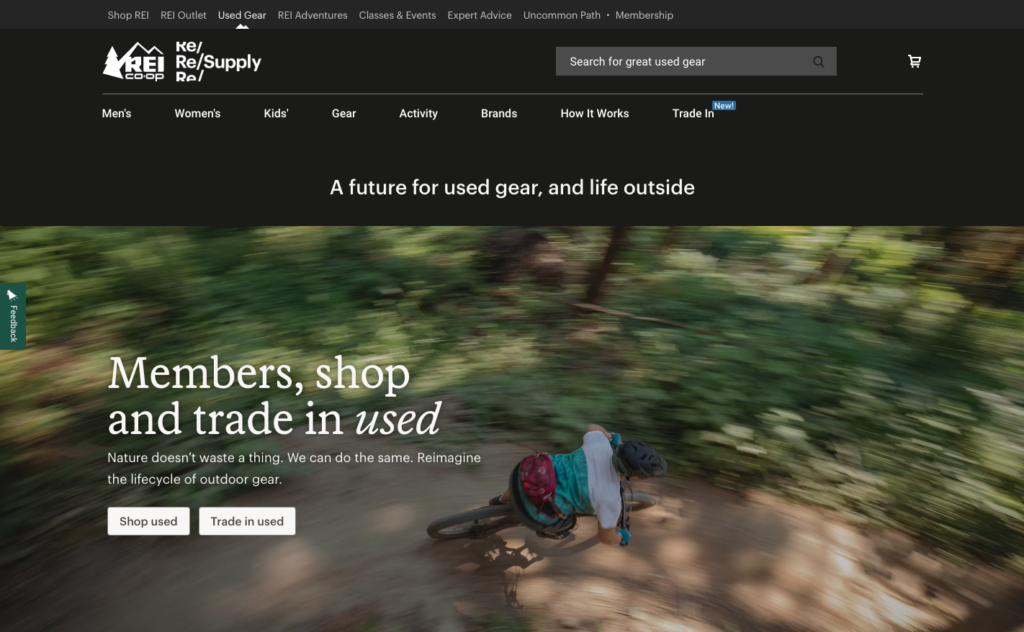
“While the last 10 years were dominated by marketplaces, brands and retailers are driving the next wave of secondhand. In fact, brands with their own resale shops (on ThredUP) increased 275%, from 8 in 2020 to 30 in 2021.” [2]
There are a number of brands doing the thrifting trend right.
- Patagonia Worn Wear. Patagonia’s Worn Wear site promotes “Better Than New Gear. Used to be awesome … and still is.” There, customers can find out where to have clothing and gear repaired or even access DIY guides. The “Stories We Wear” page features product stories submitted by actual customers. The site also has a “ReCrafted” section of clothes created from other clothes, and “Seconds” products that are flawed but functional. Finally, customers can trade in quality, well-loved Patagonia gear in return for credit toward future purchases.
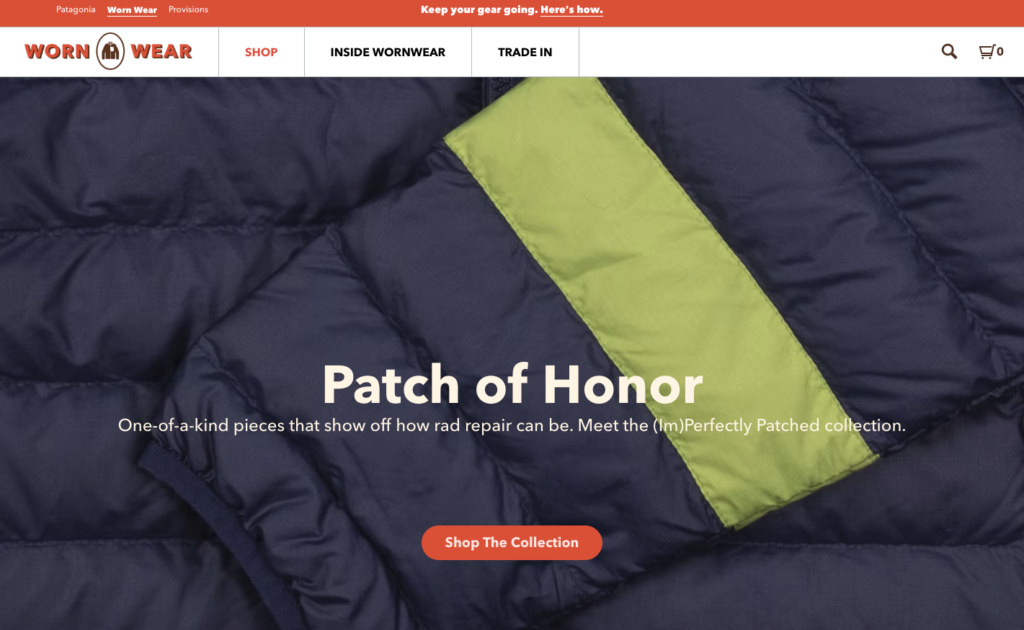
- Parks Project. The Parks Project is another example of a brand doing the thrifting trend right. In their Vintage Shop, consumers can shop for one-of-a-kind pieces thoughtfully sourced by Parks Project Vintage. “Comes pre-loaded with nostalgic Parks memories, and it’s ready to adventure and create more with you!”
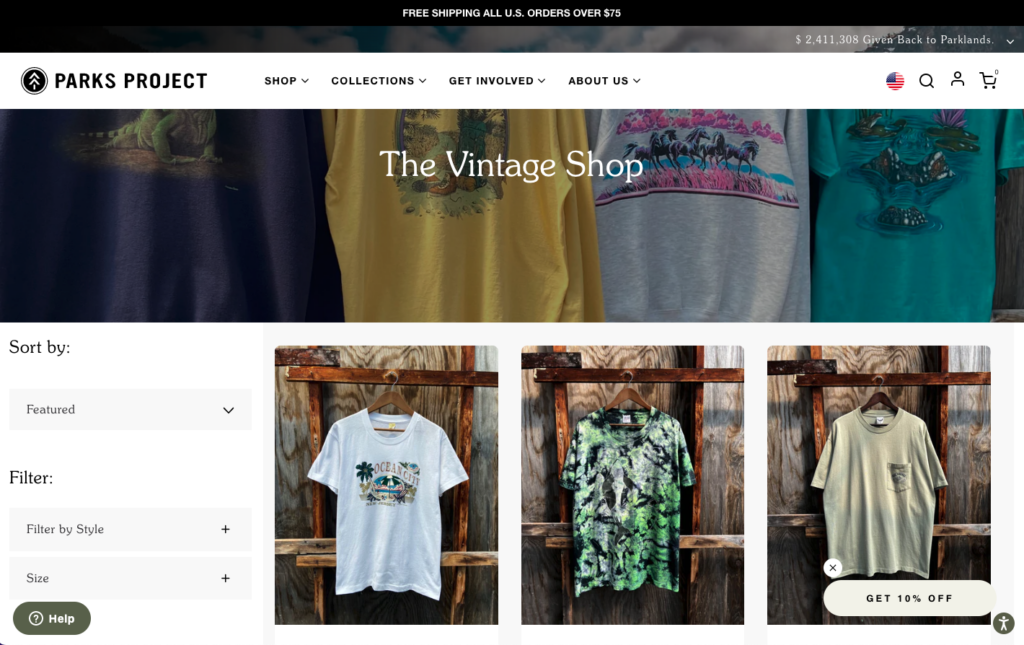
Thinking outside the (apparel) box
Thrifting doesn’t have to be limited to apparel brands. There are several companies taking a new approach, including John Deere. The agriculture equipment company promotes “A New Way of Looking at Used” through its Certified Pre-Owned program, which offers the coverage benefits of new equipment with the extra value of pre-owned. And Ikea’s Buy Back & Resell program gives new life to oldie but still goodie furniture. Sellers receive store credit while the furniture gets a second life in Ikea’s as-is department.
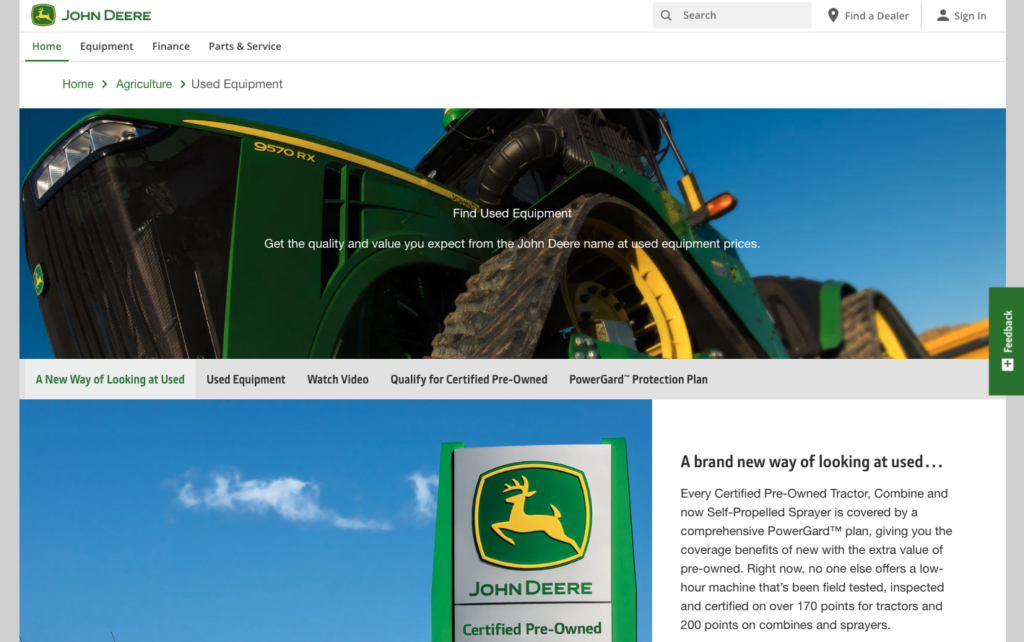
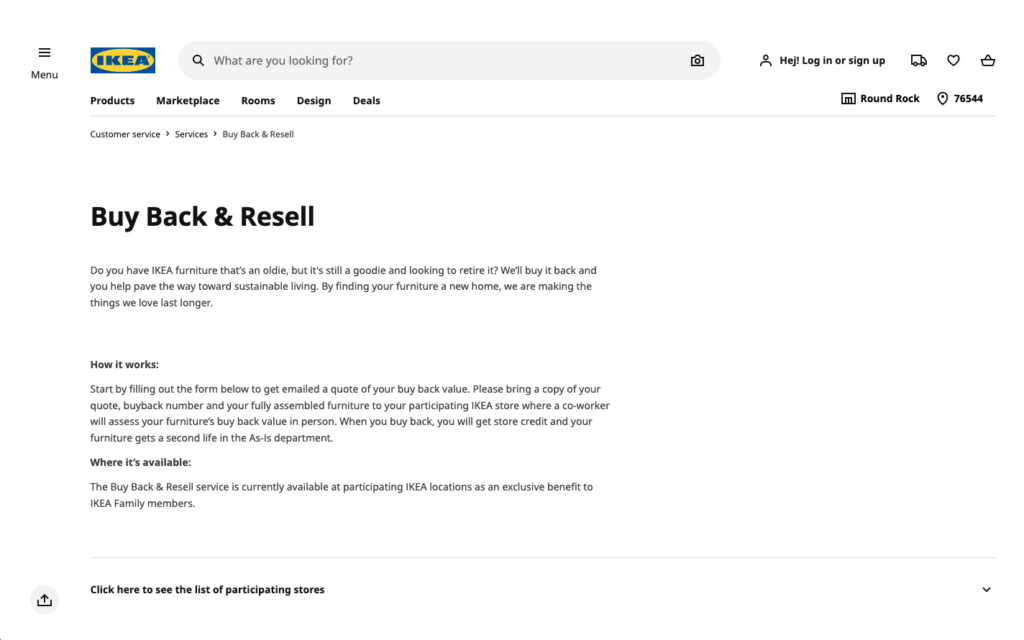
What brands can learn from used baby gear
My son is growing up. While it’s bittersweet to say goodbye to the baby days, I know I can’t stop it. I can accept – even embrace – the changes and look forward to all the new experiences and memories we’ll create together.
Similarly, brands that embrace the changes in consumer behavior and evolve their strategy have the opportunity to grow their business even in the face of financial and operational challenges.
By leaning into the thrifting trend, brands can serve existing customers in new ways, open the door to new customers, and create authentic and meaningful relationships with a target audience that values the environmental, resourceful and financial impacts of thrifting.

